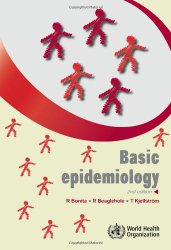$39.60
$23.56
(SAVE Now!)
as of 12/22/2024 (Details)
The second edition of this popular textbook provides an introduction to the principles and methods of epidemiology. Since publication of the first edition in 1993, Basic epidemiology has become a standard reference for education, training and research in the field of public health and has been translated into more than 25 languages. It is used widely for training public health and environment professionals, undergraduate medical students, and students in other health professions. The second edition provides updated examples of how and why the basics of epidemiology are essential to anyone who is required to understand and apply the principles of disease causation and prevention. The book has a particular emphasis on modifiable environmental factors and encourages the application of epidemiology to the prevention of disease and the promotion of health, including environmental and occupational health. It prepares members of the health-related professions to respond to the need for health services to address all aspects of the health of populations, and to ensure that health resources are used to the best possible effect. It shows how good clinical practice is informed by clinical epidemiology; and its lively, concise style is designed to stimulate a continuing interest in the subject. This edition includes comprehensive chapters on the nature and uses of epidemiology; the epidemiological approach to defining and measuring the occurrence of health-related states in populations; the strengths and limitations of epidemiological study; designs, causation; the contribution of epidemiology to the prevention of disease; the promotion of health and the development of health policy; and the role of epidemiology in evaluating the effectiveness and efficiency of health care.It enables students to describe the common causes of death, disease and disability in her or his community; outline appropriate study designs to answer specific questions concerning disease causation, natural history, prognosis prevention and the evaluation of therapy and other interventions to control disease and critically evaluate the literature.
Technical Details
No features available.